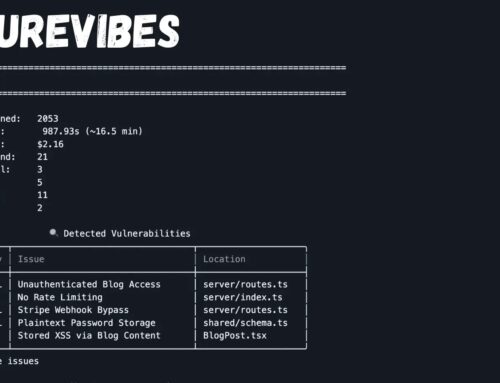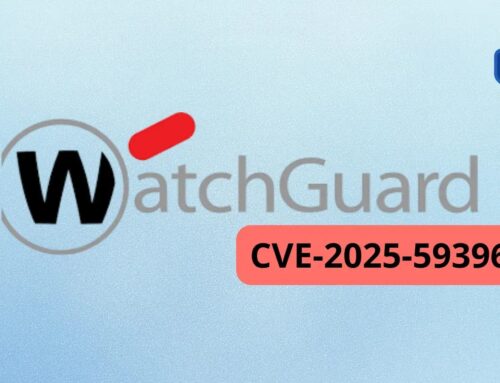
Devolutions Server Vulnerability Let Attackers Impersonate Users Using Pre-MFA Cookie
Urgent: Devolutions Server Vulnerability Puts User Accounts at Risk
In the complex landscape of enterprise IT, privileged access management systems are the gatekeepers to sensitive infrastructure. When these systems harbor critical vulnerabilities, the repercussions can be severe. A recent discovery sheds light on just such a risk: a critical flaw in Devolutions Server that could allow low-level attackers to impersonate other user accounts. This isn’t merely a bug; it’s a potential breach vector that demands immediate attention from IT professionals and security teams.
The vulnerability, tracked as CVE-2025-12485, underscores the persistent challenge of secure authentication mechanisms, particularly in environments reliant on multi-factor authentication (MFA). At its core, the exploit leverages the application’s handling of authentication cookies before MFA is fully completed, creating a dangerous window for unauthorized access.
Understanding CVE-2025-12485: The Pre-MFA Cookie Impersonation Flaw
At the heart of CVE-2025-12485 is a critical lapse in privilege management related to how Devolutions Server processes temporary authentication cookies. When a user initiates a login sequence, the application generates temporary cookies to manage the session. The flaw exploits the window of time between the initial authentication and the completion of the MFA process.
Cybersecurity researchers discovered that attackers with even rudimentary access could manipulate or hijack these pre-MFA cookies. By doing so, they could trick the server into believing they are a different, legitimate user, effectively bypassing the subsequent MFA step and gaining unauthorized access to that user’s account. This type of vulnerability is particularly insidious because it targets the very mechanism designed to enhance security – MFA – by compromising the session before MFA can fully exert its protective influence.
Such an impersonation could grant an attacker privileges ranging from viewing sensitive data to executing actions on behalf of the compromised user, depending on the victim’s access level within Devolutions Server. This highlights a fundamental security principle: robust authentication must be end-to-end, with no exploitable gaps in the process flow.
Impact of the Devolutions Server Vulnerability
The implications of CVE-2025-12485 are significant, particularly for organizations relying on Devolutions Server for centralized credential management and secure remote access. An attacker successfully exploiting this flaw could:
- Gain Unauthorized Access: Impersonate any user within the system, including those with elevated privileges, leading to a complete compromise of critical resources.
- Data Exfiltration: Access and steal sensitive data, such as credentials, server configurations, database connections, and intellectual property stored or managed by Devolutions Server.
- System Disruption: Execute unauthorized actions, modify configurations, or deploy malicious scripts, potentially causing widespread operational disruption.
- Lateral Movement: Use the compromised account to move deeper into the network, leveraging the valid credentials and access permissions of the impersonated user.
- Reputational Damage: Suffer significant reputational harm, regulatory fines, and loss of customer trust due to a security breach.
This vulnerability bypasses what many consider a cornerstone of modern security – MFA – making it a potent threat for any organization that has implemented Devolutions Server.
Remediation Actions and Mitigation Strategies
Addressing CVE-2025-12485 requires immediate and decisive action. Organizations using Devolutions Server should prioritize the following steps:
- Apply Patches Immediately: Monitor official Devolutions security advisories for patches addressing CVE-2025-12485. Apply all recommended updates as soon as they become available. This is the most crucial step for direct mitigation.
- Review and Enforce Least Privilege: Regularly audit user permissions within Devolutions Server. Ensure that all users and service accounts operate with the absolute minimum privileges necessary to perform their functions. This limits the damage an attacker can inflict even if an account is compromised.
- Session Management Hardening: Implement strict session timeout policies and consider mechanisms for invalidating sessions more aggressively, especially after periods of inactivity or suspicious login attempts. While patching is primary, strong session management adds a layer of defense.
- Enhanced Monitoring and Alerting: Implement robust logging and monitoring for Devolutions Server. Look for unusual login patterns, failed MFA attempts, rapid changes in access levels, or access from unfamiliar IP addresses. Integrate these alerts into your Security Information and Event Management (SIEM) system.
- Security Awareness Training: While not a direct technical mitigation for this specific flaw, reinforcing security awareness among users regarding suspicious login prompts and reporting unusual activity remains a vital part of a holistic security posture.
Security Tools for Detection and Mitigation
While awaiting official patches, certain security practices and tools can assist in detecting potential exploitation attempts or strengthening overall security posture:
| Tool Name | Purpose | Link |
|---|---|---|
| SIEM Solutions (e.g., Splunk, QRadar, Elastic Security) | Centralized logging, correlation of security events, and alerting for suspicious activity originating from Devolutions Server logs. | Splunk / IBM QRadar |
| Intrusion Detection/Prevention Systems (IDPS) | Monitor network traffic for unusual patterns or known exploit signatures targeting authentication mechanisms. | Snort / Suricata |
| Vulnerability Scanners (e.g., Nessus, OpenVAS) | Identify known vulnerabilities in system configurations and deployed software versions. While they might not detect the exploit directly, they can identify unpatched systems. | Nessus / OpenVAS |
| Network Access Control (NAC) | Enforce access policies and segment network resources to limit an attacker’s lateral movement post-compromise. | Cisco ISE / Aruba ClearPass |
Conclusion: Prioritizing Patching and Vigilance
The CVE-2025-12485 vulnerability in Devolutions Server serves as a stark reminder that even multi-factor authentication, while critical, isn’t a silver bullet. Flaws in the underlying implementation of authentication workflows can create critical vulnerabilities. For IT and security professionals, the immediate priority must be to closely monitor Devolutions for official patches and deploy them without delay. Beyond immediate remediation, fostering a culture of continuous security auditing, least privilege enforcement, and robust monitoring is essential to building resilience against evolving threats. Ignoring such vulnerabilities risks compromising the very systems designed to secure an organization’s most valuable digital assets.





